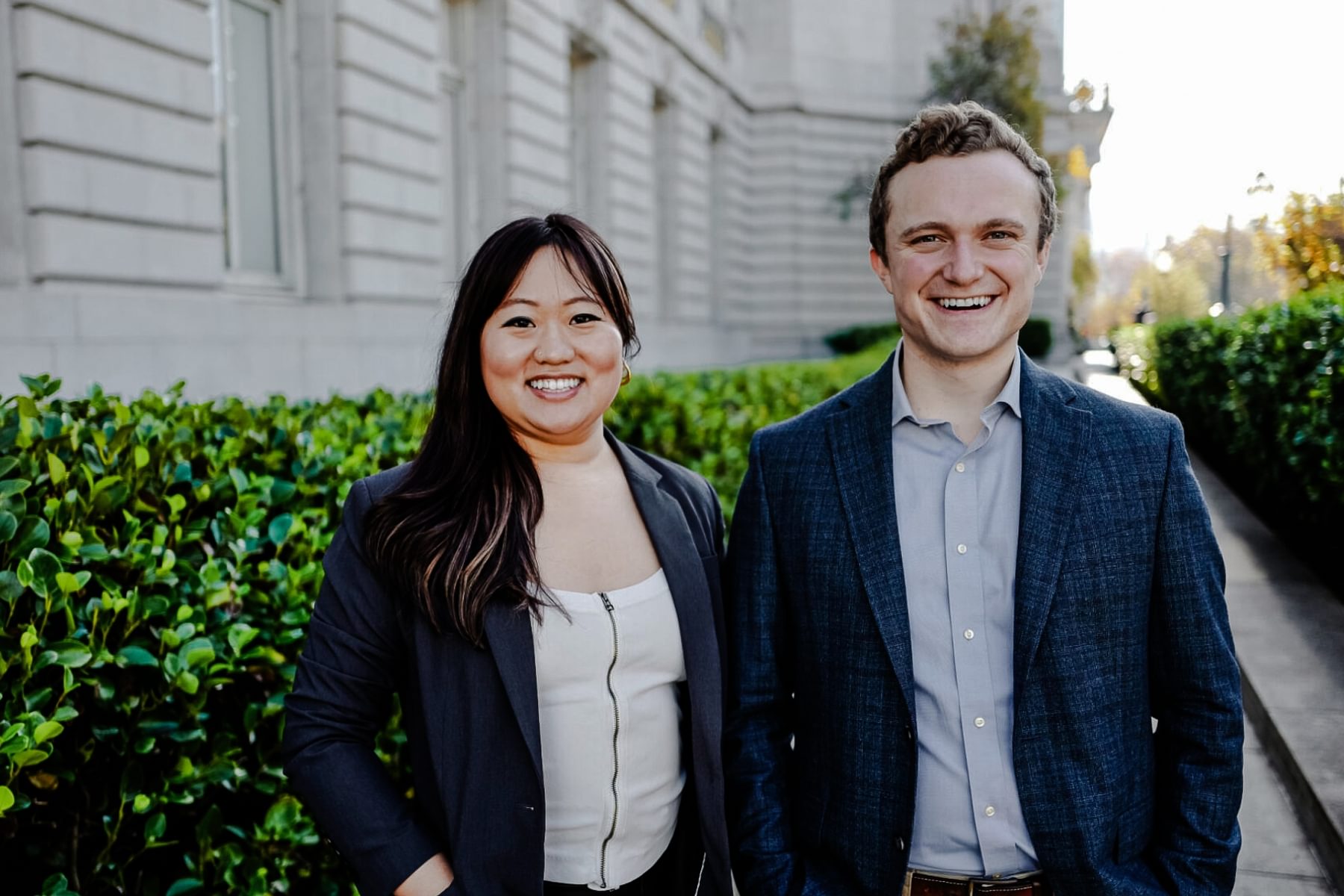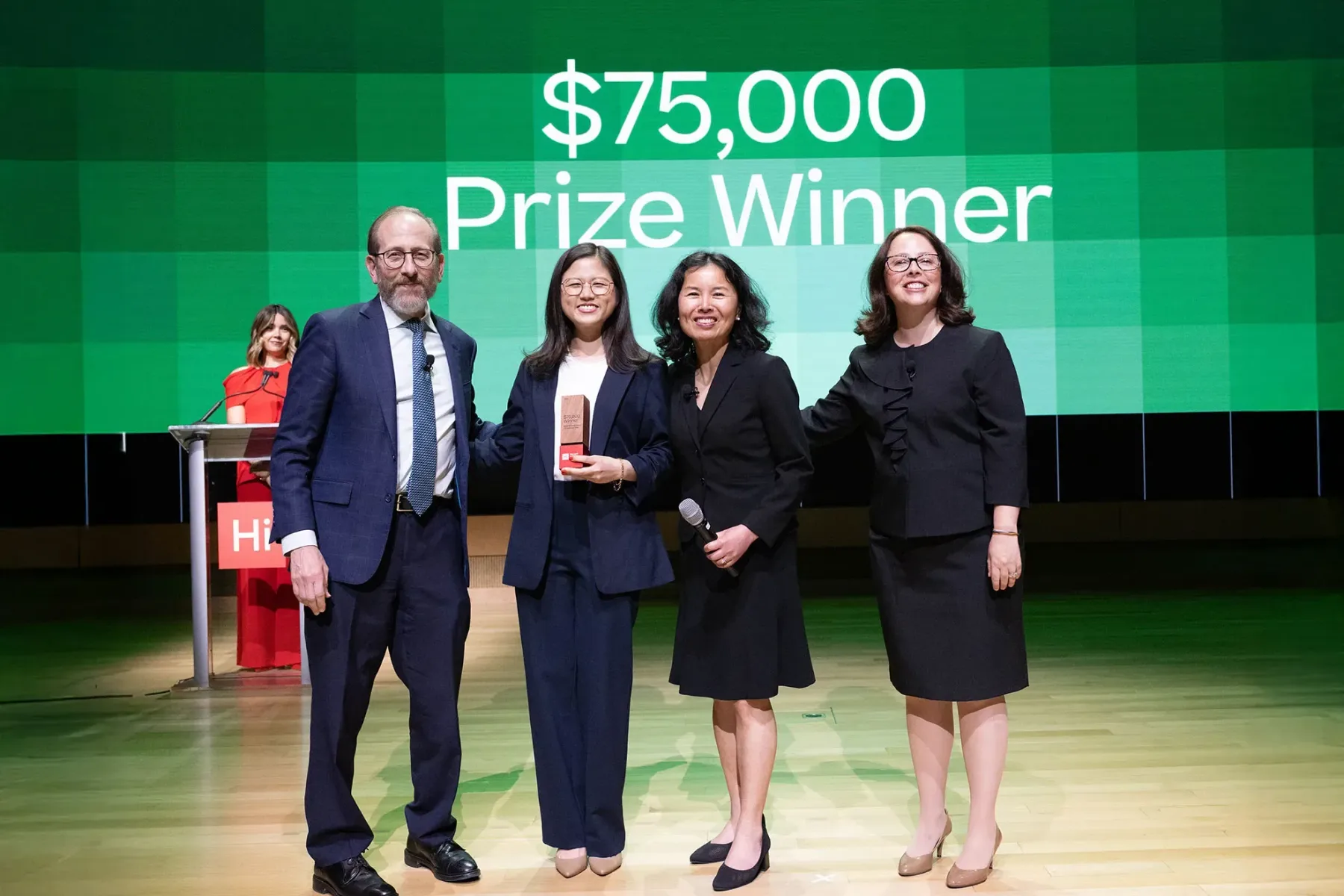Soon after Aatish Patel (HES '22) came to Harvard in 2020, the University went on COVID lockdown. An engineer by training, Patel continued to work on his master's in management while also pursuing his research interest in electric vehicle charging technologies. To relax, he played the racing video game Forza Horizon.
That spring, all three activities led to the formation of a startup that would go on to change how EVs are charged across North America.
Patel was working on a technical whitepaper on how EV chargers could be more affordable if they used a lower, 208-voltage rather than the global standard of 480V. He started talking about the whitepaper while gaming with Alex Urist. Urist had a background in business development and a deep interest in the EV space. Quickly, Patel and Urist decided to set up a meeting.
“We had one Zoom call to talk through the white paper, and realistically, what we would need to do to build this EV charger,” said Patel.
In four years, Patel and Urist went from having a Zoom call to developing and installing their first product, joining forces with a larger electric charging company, and taking that company public. Along the way, they’ve developed a range of innovative EV charging solutions that have fundamentally reshaped the industry.
No supply chain, no problem
Initially, Patel and Urist, along with Elliot Kastner and Joel Urist, called the venture Current Electric. Together, they focused on building a more affordable EV charger for hotels, hospitality, and quick-service restaurants.
Patel shared, “On paper, it seemed easy to get started, but we quickly realized there were a lot of challenges associated with this project. There was a reason why no one had done this before.”
Urist explained that 208V is a “North American-only” standard and that there was no supply chain for sourcing the parts needed to support a 208V EV charger. “Aatish contacted every single tier one charging manufacturer in the world, and no one would work with us,” he said.
Patel came from a supply chain background and wasn’t dissuaded. Instead, he decided to broaden his supplier outreach and focus on “reconceptualizing how to make charging hardware.”
After months of outreach, Patel and Urist found a partner, XCharge, that was willing to work with them on the main component for their charger.
A catastrophic setback
When Patel and Urist designed and manufactured their first EV charger, they achieved everything they had hoped to do: They made a charger that “cost $10,000 to install instead of $150,000” and would “charge cars quickly.”
Then, disaster struck.
Urist recalled, “We ordered our first unit. It was shipped to us, and we were happy. Then, as we were unloading the unit, it fell off the back of the truck and went caput. That was our savings and pooled together cash gone, and nine months of our lives.”
After the initial shock, Patel reflected, “No one said starting this business was going to be easy. We found a way to get more money – including personal financing from my savings. We wired over another deposit to the manufacturer and were able to get another unit.”
No one said starting this business was going to be easy. Aatish Patel, Co-Founder, XCharge
Joining forces with XCharge
In 2022, after the initial installation and a few months of what Patel described as “deep troubleshooting,” Current Electric had a fully working EV charger and a blueprint for growth.
Patel and Urist wanted to quickly manufacture more EV chargers and grow across the US. As they considered the best way to do that, they reflected on the positive relationship they had with XCharge in helping them source their initial parts. Instead of raising venture funds, they decided to approach XCharge about acquiring Current Electric.
“XCharge was based in Europe and wanted to expand into North America, and Current Electric wanted to scale,” shared Patel. “It made sense for us to join forces, with Alex and I leading XCharge North America.”



Deciding to go public
In September 2024, XCharge announced its initial public offering (IPO) on the Nasdaq Global Market under the ticker symbol “XCH.” In discussing why XCharge went public instead of raising private capital, Patel shared that going public was the best decision for the company to meet its growth goals. “Operationally, going public allowed us to still focus on growth while maintaining the lean philosophy that’s really gotten us here,” he explained.
But going public was not without its challenges. There were moments where Patel and Urist questioned whether they wanted to continue moving forward.
“The key thing we kept coming back to was: we want to go public, because it would open up a lot more control for us in terms of how we go about future fundraising and also help us establish ourselves and scale the company,” said Patel.
Operationally, going public allowed us to still focus on growth while maintaining the lean philosophy that’s really gotten us here. Aatish Patel, Co-Founder, XCharge
Leveraging the i-lab network
Over the last five years, Patel and Urist have participated in a range of Harvard Innovation Labs programs, from the Student i-lab membership to the Harvard Climate Entrepreneurs Circle. In discussing the benefits of being a part of the Harvard Innovation Labs, Patel cited the early-stage funding he received through the Allston Venture Fund and talked at length about the university innovation center’s community.
“Networking has been the biggest benefit of the i-lab,” he said. “The people we’ve met through the i-lab's two-minute pitch days have been super helpful.”
One of the many people XCharge met through the i-lab was the founder of Grensol Group, a venture focused on reducing end-of-life waste associated with EV supply equipment. In 2024, XCharge and Grensol Group announced a formal partnership.
“With Grensol, we're looking at ways to optimize the full lifecycle of chargers,” said Urist. “When we have broken or end-of-life parts, we send them to Grensol for recycling.”
Looking ahead
The past year saw rapid growth for XCharge North America. In addition to going public, the company launched a high-power EV charger designed specifically for the North American Market: GridLink.
As XCharge looks towards the future, the company will continue to offer best-in-class EV charging solutions while also exploring opportunities to expand into additional energy-focused categories. Patel explained, “As XCharge adds energy storage into the mix with products like GridLink, the company is starting to play in the realm of not just being an EV supplier, but also a distributed energy player.”
Urist added, “Aatish and I have gone through two market cycles when we think about the development of chargers. We point to the US being in the top of the third inning, when you think of a nine-inning baseball game of EV charging. There’s still so much more to do for large scale and rapid deployment of EV charging hardware. That’s one thing we’re focused on with the hardware we’re deploying into the market today.”
There’s still so much more to do for large scale and rapid deployment of EV charging hardware. Alex Urist, Co-Founder, XCharge
Safe Harbor Statement: This article contains forward-looking statements. These statements are made under the “safe harbor” provisions of the U.S. Private Securities Litigation Reform Act of 1995. Statements that are not historical facts, including statements about the Company’s beliefs and expectations, are forward-looking statements. Forward-looking statements involve inherent risks and uncertainties, and a number of factors could cause actual results to differ materially from those contained in any forward-looking statement. In some cases, forward-looking statements can be identified by words or phrases such as “may,” “will,” “expect,” “anticipate,” “target,” “aim,” “estimate,” “intend,” “plan,” “believe,” “potential,” “continue,” “is/are likely to”, or other similar expressions. All information provided in this press release is as of the date of this press release, and the Company does not undertake any duty to update such information, except as required under applicable law.





